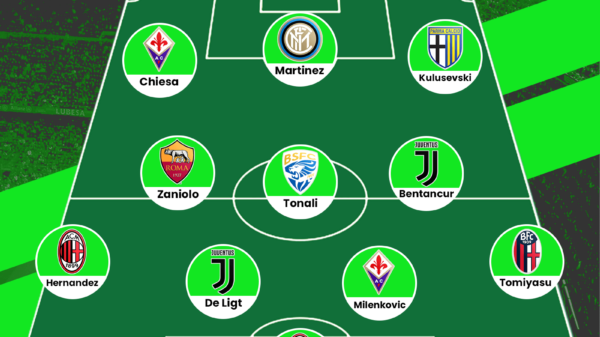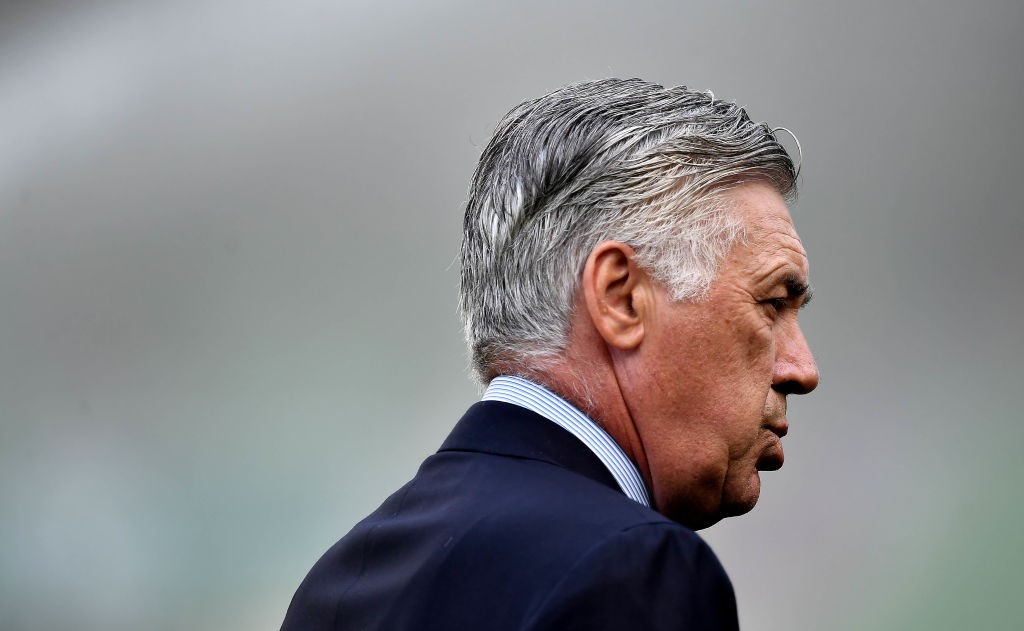While the Bianconeri have dominated the Serie A in the recent past, they’ve had contrasting fortunes in Europe with many believing the 3-5-2 formation employed to be the root cause. The appointment of Allegri gave them a fresh start though; Stephen Ganavas looks at how the new Juventus formation has breathed life into the team.
Massimiliano Allegri’s switch to the 4-3-1-2/4-3-2-1 (we’ll call it 4-3-1-2 for now), has so far been a breath of fresh air for Juventus.
Looking particularly stale under the 3-5-2 used successfully under the three year tenure of former manager Antonio Conte, Allegri’s changes are paying dividends for the Bianconeri, especially from an attacking standpoint. While against Olympiakos the team showed teething problems as it scraped together a sloppy 3-2 win after going behind, the brilliant 7-0 victory over Parma demonstrated that Allegri is taking a team in a positive direction. One, that after three years, Conte was unable to direct them.

Simply put, Juventus have struggled to post big scores and lag behind other European heavyweights in their ability to do so. Juve fans have grown used to seeing Real Madrid, Barcelona, Chelsea, and Bayern regularly put 5 or 6 past provincial teams in their respective leagues, whereas the 3-5-2 has restricted Juve to grinding out one or two-nil wins.
In contrast, the 4-3-1-2 allows for greater fluidity in Juventus’ attacking play. With Claudio Marchisio at the base of the 3 man midfield, his added work-rate in comparison to Andrea Pirlo allows more of a free rein for Paul Pogba, Arturo Vidal, or any other midfielder rotating in the other two spots. This allows them to push forward and score more often – extremely important with players like Vidal and Pogba who are both capable of 10+ goal seasons.
However, while the midfield played its role in attack, the attack did not look as reliant on the midfield to create the main attacking drive as it does in the 3-5-2. This will be important for the tests this side will face in the coming weeks against the likes of Lazio, Fiorentina, and Atletico Madrid, where the midfield will find added pressures from the necessity of defensive solidity. Juventus fans will anticipate those matches with far more confidence and optimism than they may have had a few short weeks ago. The players will also take confidence from the success of the new approach that has seen them net ten times in two games.
Further up field, Fernando Llorente is able to lead the line in full knowledge that in forcing a contest, he will bring the other two attackers plus midfield runners into the attacking phase. Beforehand, this was limited to just Carlos Tevez, as Juventus’ midfielders were forced into more defensive work to cover for Pirlo.
Tevez himself, is allowed free rein in this formation to drift in-between the lines, feeding off Llorente whilst turning creator on occasion too. It’s easy to forget that Tevez is an efficient creator as well as finisher, having his hand in 4 assists this season to go with his 8 goals.
The wing-backs also did not help the attacking phase in the 3-5-2. While Stephan Lichtsteiner and Kwadwo Asamoah each play with heart, they simply do not have the technical ability to be able to make incisive plays from advanced wide areas. Lichtsteiner, on the other hand, was born to be a natural right-back, while Asamoah should be given a chance to show his worth at left-back. Both players however, are still able to maraud down the flanks against opposition that allow them too, and Lichtsteiner successfully exploited this against Parma, scoring once, and assisting twice.
The new formation also opens up a spot for Juventus’ plethora of young attacking options. Roberto Pereyra looked at home behind the strikers against Parma, buzzing around the penalty area and making himself a nuisance to Parma’s less than impressive backline, while Alvaro Morata and Kingsley Coman came off the bench to great effect, with the former grabbing a brace in his 20 minute cameo.
In fact, three Juventus strikers, Tevez, Llorente, and the aforementioned Morata, all ended up with braces in the demolition of Parma. Juventus’ depth in attack is quickly becoming its greatest asset, and an extra spot for a striker in the starting line-up makes the team far more dangerous, as well as attractive to watch.
Watching the game itself, it looked like a completely different Juventus to the one we’re used to seeing. Allegri’s possession game looks far more relaxed and fluid under this formation and the transitional phases seem less clunky and forced. Defensively though, this side will need to adapt to the change in formation. The return of Andrea Barzagli will be much appreciated for Juventini, as will the return of Martin Caceres who has been one of Juventus’ best performers this season and provides plenty of depth to the squad.
Allegri rode the wave of his arrival being the fresh challenge that spurs on the players, now he is showing that he can tactically challenge the players, and tactically make his side better than the ones that have preceded him in recent times.
Written by Stephen Ganavas
Give a read to all articles from our Juventus team blog, The Old Lady.
- Juventus vs. Dortmund: The most enthralling round of 16 tie? - February 23, 2015
- Alvaro Morata: A player for now, not just the future? - February 16, 2015
- How Roberto Pereyra has played an important role at Juventus - December 9, 2014


























































